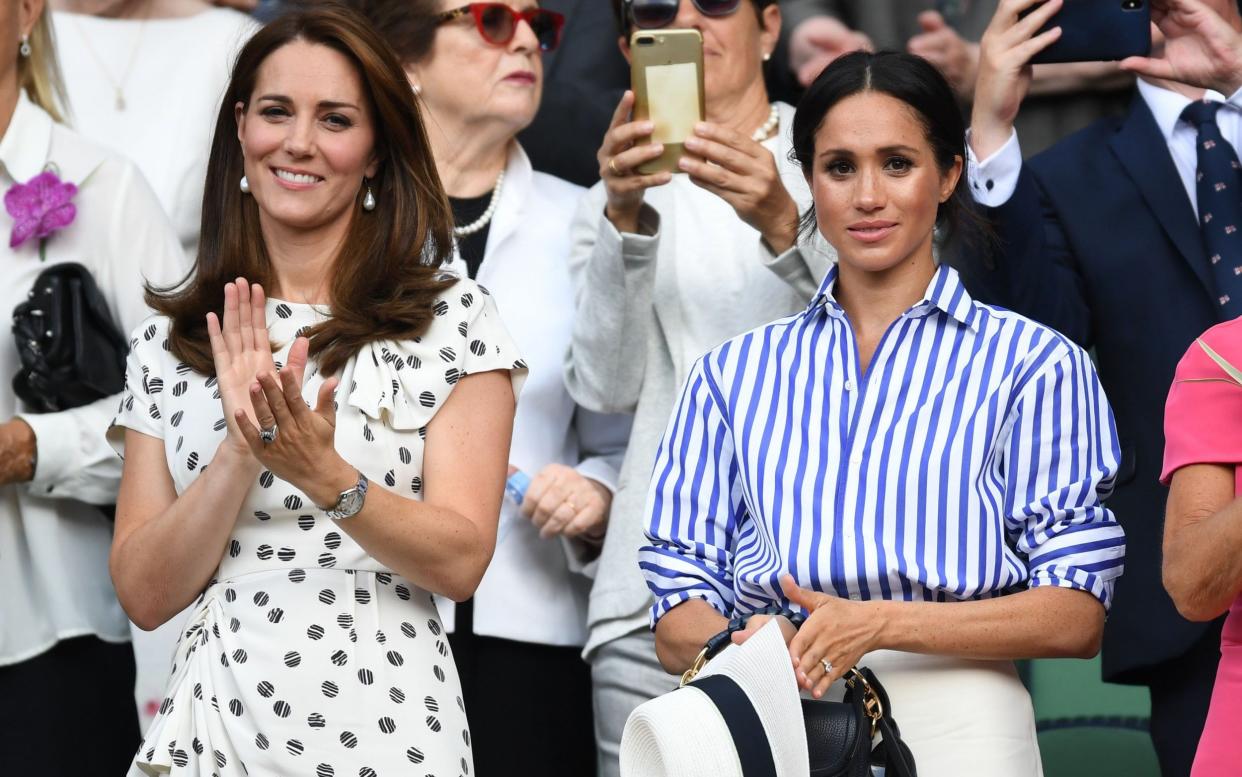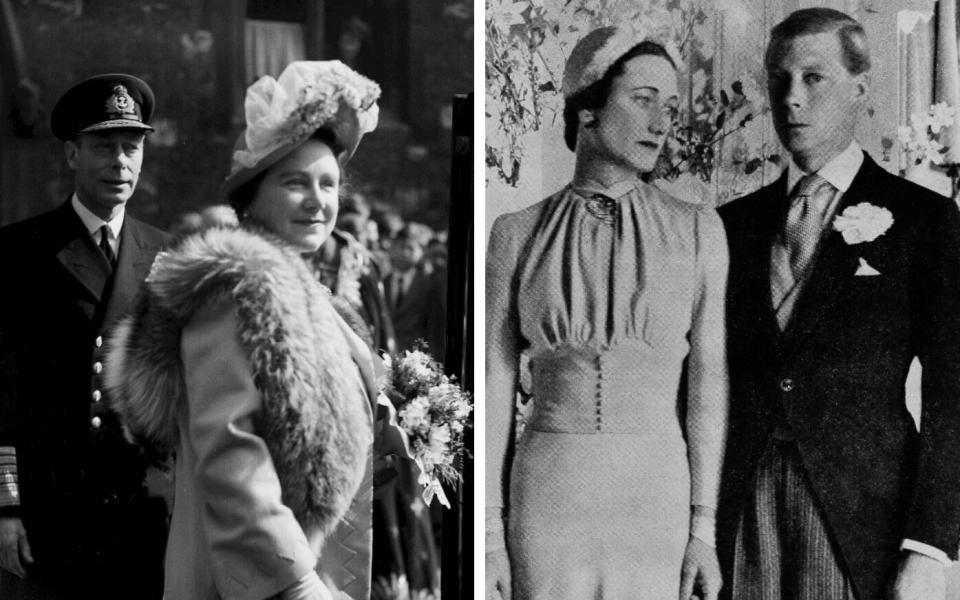Strained sisters-in-law: How Meghan and Kate’s relationship echoes through history

Of the individuals to emerge bruised from the sensational Oprah Winfrey interview with the Sussexes, the Duchess of Cambridge might be among those to consider herself slighted. Reports at the time of Meghan’s 2018 wedding claimed that the bride had made Catherine cry over a disagreement regarding bridesmaid outfits. Instead, Meghan declared to Winfrey: “No, no, the reverse happened”. She added: “And I don't say that to be disparaging to anyone because it was a really hard week;” the implication left hovering that surely the person experiencing the hardest week had been Meghan.
An emotional altercation with her future sister-in-law may not have been the only thing to propel the newest member of the Royal family into a state of suicidal despair, but it was a factor. For, in Meghan’s opinion, the disagreement marked “a turning point”. “That was when everything changed,” she asserted. “It was the beginning of the character assassination and they knew it wasn't true.” The Duchess added: “I think so much of what I have seen play out is this idea of polarity, where, if you love me, you don't have to hate her. If you love her, you don't need to hate me. They really seem to want a narrative of a hero and a villain.”
And not only this unidentified “they” (the Royals, the ever-dastardly press, society at large?) For Meghan herself did not seem entirely reluctant to cast Kate in the role of villain, however glancingly she did so.
It was notable that – despite arguing that Kate “owned” her transgression, sent flowers and an apology and is “a good person” – Meghan hoped her sister-in-law would have wanted the reports corrected. At the same time, Bel-Air’s resident royal swerved opportunities to praise the future Queen. Winfrey inquired about a trip to watch Wimbledon with Kate in 2019: “Was it what it looked like? You are two sisters-in-law out there in the world, getting to know each other. Was she helping you, embracing you into the family, helping you adjust?” The Duchess of Sussex’s response was a curt: “My understanding and my experience of the past four years is it’s nothing like what it looks like.”
Even for non-royals, the relationship between sisters-in-law may prove testing. There will always be favourites and least favourites, golden girls and new brooms, doughty plodders and drama queens. Where actual queens are involved, the stakes will only be raised. No doubt Margaret of Burgundy turned her nose up at widow, commoner and all-round upstart Elizabeth Woodville when she ensnared Margaret’s brother, Edward IV. The bickering among Regency sisters-in-law must have made family functions intolerable. However, to the modern mind, the royal sister-in-law rivalry to beat all rivalries was that of Queen Elizabeth The Queen Mother versus Wallis, Duchess of Windsor.

Much ink has been spilled over their bitter 50-year feud. However, Hugo Vickers, the author of definitive biographies of both women, tells me: “The Queen Mother used to deny hating the Duchess, saying you have to know someone to hate them. She was always very polite to Wallis, but it is fair to say that she was not in favour of her and that got across. She was like Tammy Wynette, standing by her man, concerned that George VI might be undermined by the charisma of his brother.”
Vickers argues that the young Elizabeth Bowes-Lyon may have set her cap at this older brother, while settling for the younger, lending spice to the idea of a later rivalry. Certainly, the two women could not have been more different. The sweet-toothed Scottish aristocrat known as “Cookie” to the Windsors, “Cake” to the Mitfords, was deemed “lazy” by Chips Channon, as we read in Simon Heffer’s unredacted edition of his diaries. Quoth Channon: “She is fundamentally lazy, very lazy… She will never be a great Queen for she will never be up in time!”
Watching or listening to the Kenneth Harris interview with the Windsors from 1970, the word one most associates with the Duchess is “pep”. This angular fashion plate goes to bed late, barely sleeps and rises early. Dry, witty, brisk, the woman who declared one could never be too rich or too thin, positively fizzes with vim. Where Elizabeth had her children, so Wallis had her pugs. Where Elizabeth had her “banal” houses (Channon again) and stodgy middle-class values so Wallis built a modish and fastidious court-in-exile.
Other convenient juxtapositions have since presented themselves. Despite what is claimed in The Crown, Vickers maintains that the Princess Royal felt nothing but relief – rather than envy – when the cult of Diana, Princess of Wales took flight. “Diana liberated Princess Anne, taking the pressure off her to be the beautiful, fairy-tale princess and allowing her to be the executive princess she was destined to be.” Diana and Fergie were then played off against each other: the first loved and hated, the second mocked, but largely liked. (The Duchess of York is notable as the only royal other than Her Majesty the Queen to come out of the Sussex interview well, having taught Meghan to curtsey.)
Kate and Meghan genuinely couldn’t be more different. Catherine was the shy girl from Bucklebury, who had never had a proper job, and now finds herself a global campaigner and increasingly assured future queen. Meghan was the ambitious professional who fought her way into a television career and influencer role and now feels not only sidelined but silenced. Kate’s is a story of duty and caution, her sister-in-law’s of volatility and high-drama. “Waity Katy” put her life on hold for years to win her man; Meghan’s romance took off like a rocket. One is most comfortable in a Barbour, wellies and high-street earrings, the other in costly couture.
However, one woman married the heir, the other the spare, and – while La La Land may be a meritocracy – royalty runs on rank rather than who wins in the glamour stakes; a message one feels may be behind Meghan’s repeated insistence that she didn’t know what came with the job. Harry recognised this when he gave his mother’s ring to his older brother because it was William’s wife who would one day be queen and he wanted Diana’s ring on the throne.
But second fiddle would never be enough for the Royals’ wannabe starlet, who reveals that she is still telephoning the Queen while abusing Her Majesty’s family across the globe; identifying the Cambridges with Team Charles, the Sussexes, Team Diana. It is this that is proving “polarising”, encouraging a love versus hate reaction and talk of heroines and villains – and it is a schism of the Sussexes' own making.

